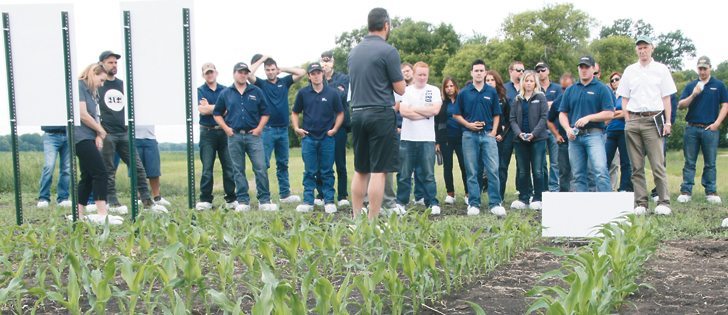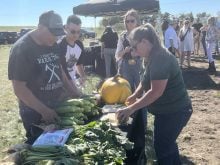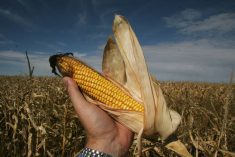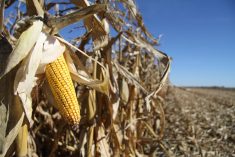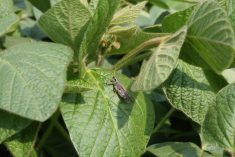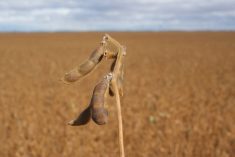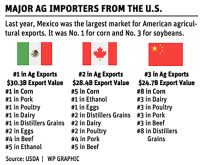Developing a hybrid that matures three or four days earlier reduces the risk of frost damage
In 2013, Monsanto promised to invest $100 million in early maturing corn varieties in the hope that prairie farmers would plant eight to 10 million acres of corn by 2025.
A Monsanto Canada representative said the company is making progress on that commitment, and short season varieties are already in the commercial pipeline.
“I think we’ve had a couple of early wins with some 73 day (relative maturity) material that we have in the Dekalb lineup and will be adding a new product this fall,” said Mark Lawton, technology development lead with Monsanto Canada.
Read Also

Soybean market still figuring out implications of China-U.S. pact
Soybean futures had a muted reaction to the U.S. trade deal with China as the market tries to figure out the nuances of the deal.
“That’s really a step change from where we were.”
Morgan Cott, a Manitoba Corn Growers Association agronomist, said farmers in the province are already growing corn hybrids that have a relative maturity of 76 to 77 days. A variety that matures three to four days earlier represents a real opportunity to expand corn’s footprint westward.
Growers who plant limited acres or don’t grow corn because they aren’t comfortable with the risk may re-consider if early maturing hybrids come onto the market.
“Three days doesn’t sound like a big difference, but it is,” Cott said.
“You’re trying to beat that frost, and three days does make a difference in mid-September.”
Monsanto has established new crop testing centres on the Prairies, including at Oakville, Man., Indian Head, Sask., and Carseland, Alta.
The company has also hired agronomists, field test staff and plant breeders.
“We’re building out a testing footprint in corn and soybeans … to understand agronomic systems and build some basic production understanding and knowledge in those local environments as you go to western Manitoba, southern Saskatchewan and southern Alberta,” Lawton said.
“(We’re ) figuring out impact of populations and row spacing and planting date and volunteer management.”
Lawton said Monsanto is using germplasm from its research facilities around the world to develop earlier maturing corn hybrids for the Prairies.
The early varieties will produce lower yields than longer season corn, but Monsanto hopes the new hybrids will yield 110 to 120 bushels per acre.
Lawton described the company’s agronomic testing as a “pre-commercial phase.”
“We want to make sure these products work before we advance them into a commercial stream.”
Introducing a corn hybrid with a 73 day relative maturity may convince more prairie growers to try corn or expand acres, but even earlier varieties will be needed to achieve eight million acres.
Sam Eathington, Monsanto vice-president of global plant breeding, said in 2013 that the company has germplasm that should cut several more days off relative maturity for Western Canada.
“We have material that we’re pretty convinced will easily be able to do 70 days, and who knows, maybe even a little bit earlier.”


